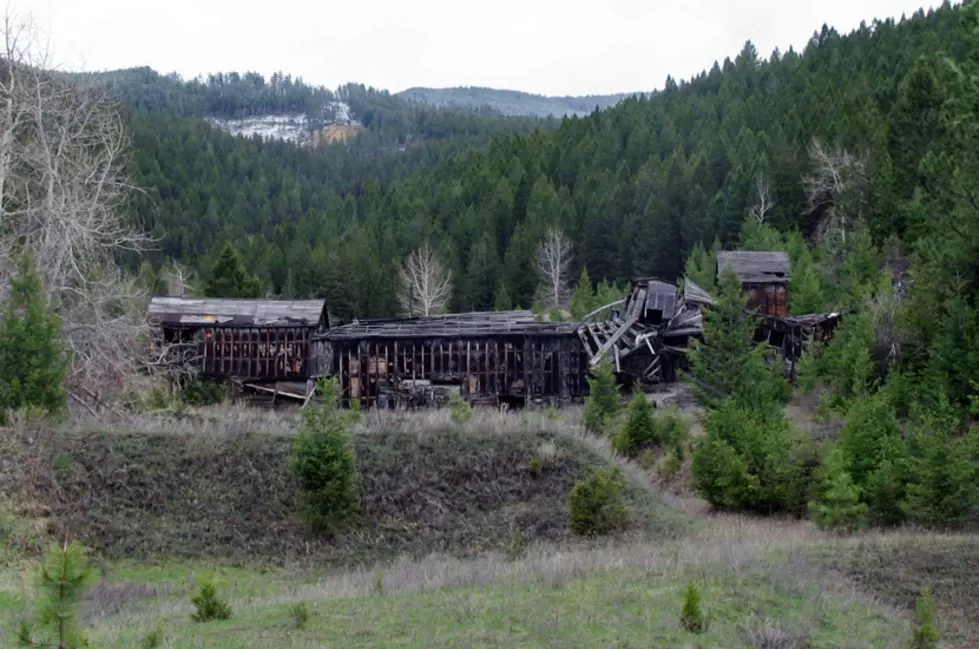
Kennecott to drill more test holes for copper mine on Clark Fork tributary
Depending on what happens in the next five years, Missoula may end up with a copper mine a few dozen miles upstream on a tributary of the Clark Fork River.
At the end of October, the Beaverhead-Deerlodge National Forest released an environmental assessment of Rio Tinto Kennecott’s plan to expand its mineral exploration in the Flint Creek foothills west of Maxville between Drummond and Philipsburg.
The Utah-based company proposes to drill up to 36 additional test holes in the hills above Smart Creek over the next five years to determine the extent of copper ore that they might have discovered over the past two years.
Most of the holes – 31 – are planned for a depth of 500 feet and each will take one to three 24-hour days to drill. The company won’t necessarily drill every hole, depending on what it finds.
Five of the holes closest to Smart Creek will require a diamond bit to drill to a depth of 3,000 feet. The company will build almost a mile of temporary road and a temporary bridge across Smart Creek, if it needs to reach all five of the deep-hole sites. A total of about 3 acres of soil and vegetation will be disturbed if all five sites are used.
Kennecott would drill the shallow holes first to determine if they want to proceed with drilling the deep holes.
Not much water is used for shallow drilling, but the company will need to haul water to the sites along Forest Service roads about twice a day.
The mountains around Philipsburg have a long history of mining, although initial efforts such as the Granite mine focused on silver. Today, more than 1,300 claims for silver, gold, copper, lead and zinc mining are active in Granite County.
Steve Kelley, Beaverhead Deerlodge Forest minerals administrator, said small groups of individuals still conduct placer mining operations in the Flint range, but Rio Tinto Kennecott is currently the only larger company exploring in the area.
According to thediggings.com, Kennecott holds the rights to 87 active claims in the Flint area around Smart Creek. Each claim is about 20 acres. The company also owns 72 claims in the mountains south of Greenough that it bought in 2007.
“They’ll keep exploring, and I don’t know at what point they’ll say either ‘We’re no longer interested’ or they’ll go to the next phase. It’ll be at least five years before then,” Kelley said. “It can take 25 years to go from exploration to a full-blown mine. At this point, it’s premature to say it’s going to turn into a mine.”
If the company decides to mine, the Forest Service would need to conduct a new environmental study. Part of that would have to consider potential contamination to Smart Creek, which feeds Flint Creek and the Clark Fork River. Heavy metals from past mining can still pollute the Clark Fork River, so safeguards would need to ensure that a mine wouldn’t add further contamination.
When asked what Rio Tinto Kennecott plans for the area should its testing pan out, company spokesman Kyle Bennett said it was still too early to know what any development might look like.
If approved, the expansion under consideration would be the third phase of exploration since February 2017, when the Forest Service approved the company’s first request to dig five test trenches between 300 and 1,200 feet long. Because the project was small, the Forest Service decided it didn’t require a public process, but it did ask 78 individuals and organizations to weigh in. Of the 10 comments received, some were concerned about effects on roads and water supplies while others opposed any mining at all.
Then-acting Pintler District Ranger Craig Kendall said the 1872 Mining Law requires the Forest Service to allow all mining exploration, but it must minimize adverse environmental effects.
Rio Tinto Kennecott must have found some positive indications because it requested permission to drill 11 deep holes in 2018 and requested an additional four more sites six months later. In the end, the company drilled only five, but their results prompted the Phase III request. Because there is still no public comment process, the exploration will probably be approved by summer 2020.
Interestingly, Frank Antonioli, member of a large family of Butte miners, received approval to drill a test hole in the same area in 2011 and another in 2012. The area must have shown potential because a 2012 mining report to the Montana Legislature reported that his exploration was continuing.
Antonioli died in 2015 at the age of 91 before he could explore further. But he founded Smart Creek Resources, which still owns a handful of claims along Smart Creek.
Contact reporter Laura Lundquist at lundquist@missoulacurrent.com.
